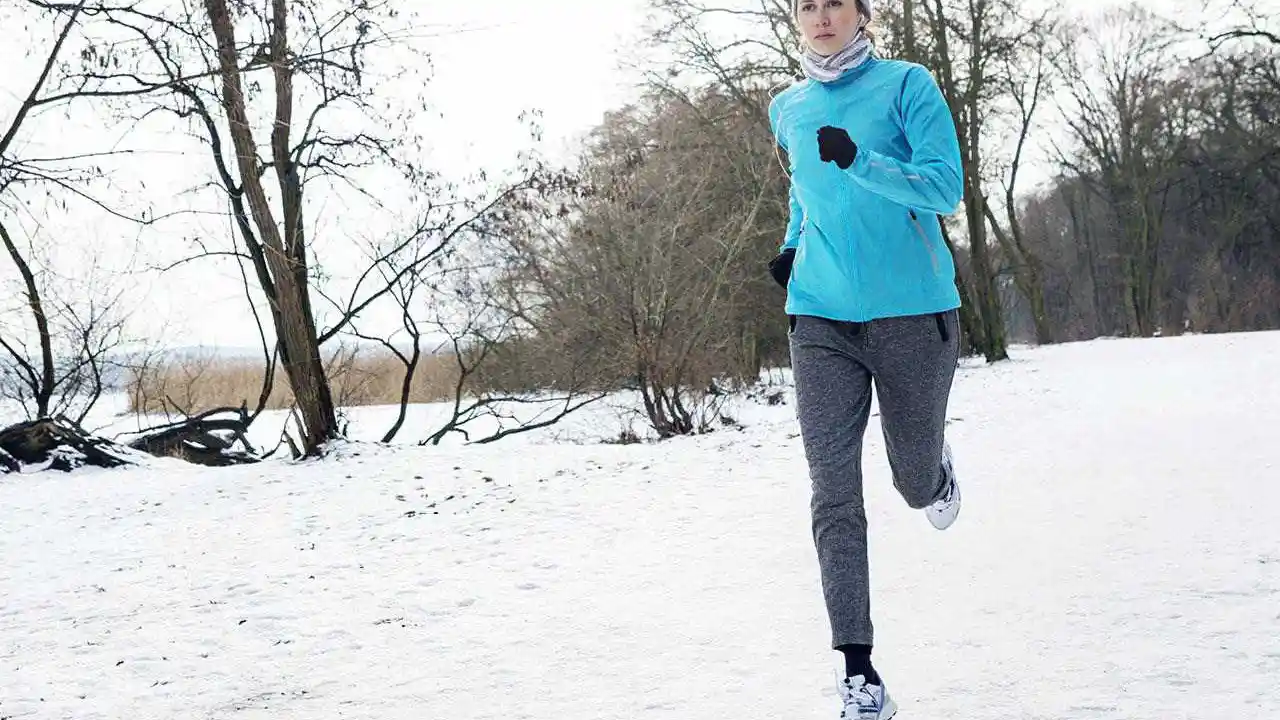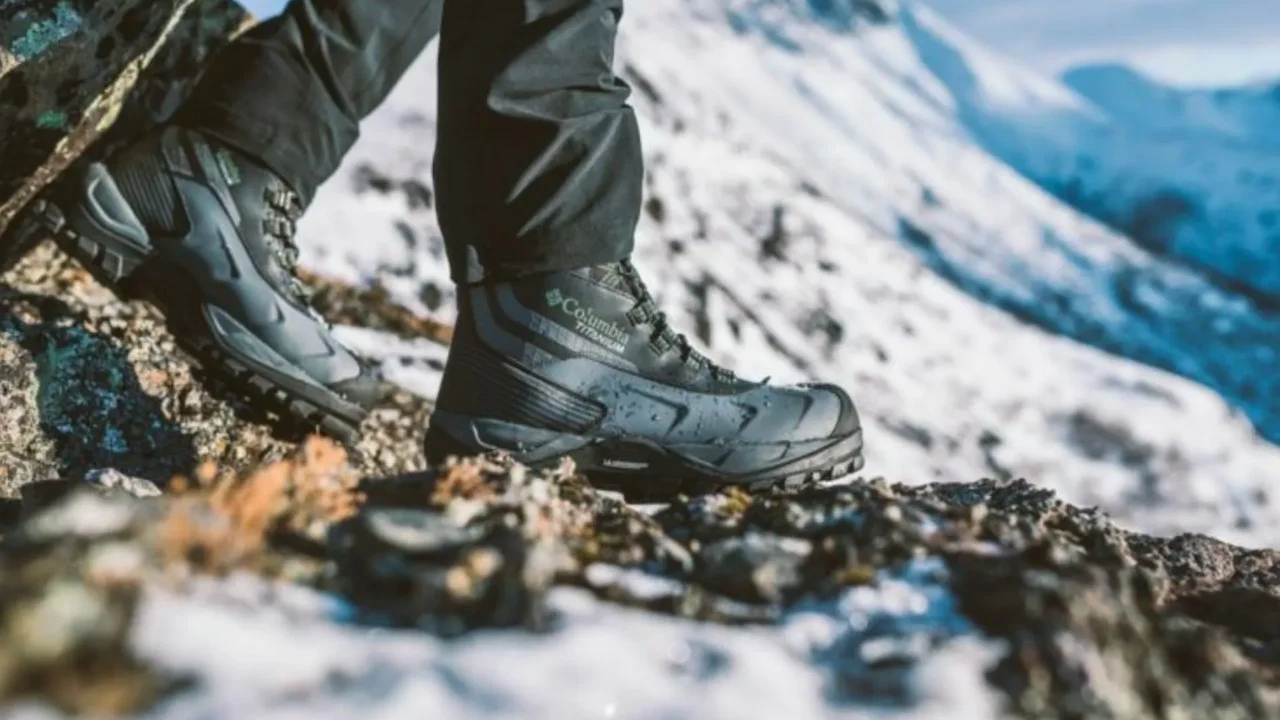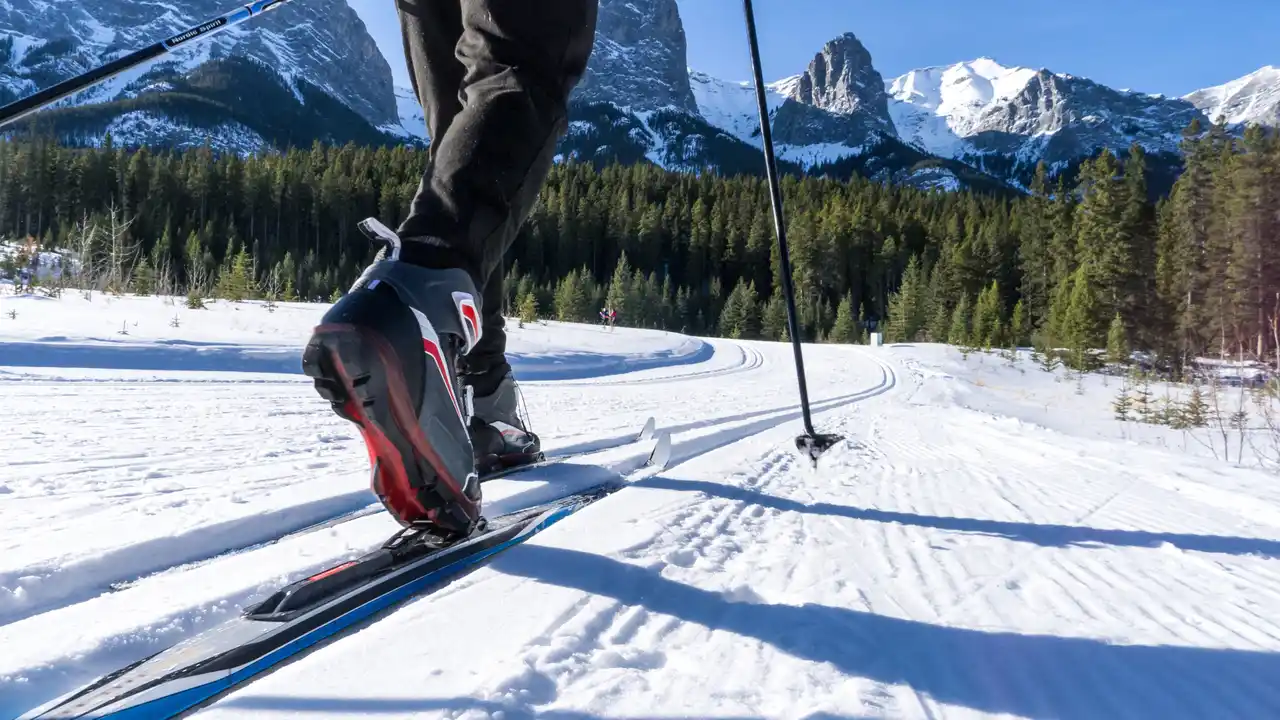
Run safely in cold weather. Tips for dressing, hydration, and recognizing signs of cold-related issues.
H2 Understanding the Risks of Cold Weather Running Hypothermia Frostbite and More
Running in cold weather can be an exhilarating experience, offering crisp air and unique scenery. However, it also comes with its own set of risks that every runner should be aware of. The primary concerns are hypothermia and frostbite, but other issues like respiratory irritation and muscle strains are also more prevalent in colder temperatures. Hypothermia occurs when your body loses heat faster than it can produce it, leading to a dangerously low body temperature. Symptoms can range from shivering and confusion to slurred speech and loss of consciousness. Frostbite, on the other hand, is damage to body tissue caused by freezing. It most commonly affects exposed areas like fingers, toes, ears, and nose. Recognizing the early signs of these conditions is crucial. For hypothermia, look for uncontrollable shivering, clumsiness, confusion, and a pale, cold skin. For frostbite, affected areas might feel numb, look waxy or discolored (white, grayish-yellow, or bluish), and feel unusually firm or rubbery. Beyond these severe conditions, cold air can irritate your airways, leading to coughing or shortness of breath, especially for those with asthma. Muscles are also less pliable in the cold, increasing the risk of strains and pulls if not properly warmed up. Understanding these risks is the first step to mitigating them and ensuring a safe and enjoyable cold-weather run.
H2 Layering for Success The Art of Dressing for Cold Weather Runs
The key to comfortable and safe cold-weather running lies in proper layering. It's not about wearing one thick jacket, but rather multiple thinner layers that can be added or removed as your body temperature changes. The general rule of thumb is to dress as if it's 10 to 20 degrees Fahrenheit warmer than it actually is, as your body will generate significant heat once you start moving. Here's a breakdown of the ideal layering system:
H3 Base Layer Moisture Wicking Fabrics for Optimal Comfort
The base layer is arguably the most important. Its primary function is to wick sweat away from your skin, keeping you dry and preventing chilling. Avoid cotton at all costs, as it absorbs moisture and will leave you feeling cold and clammy. Instead, opt for synthetic materials like polyester, polypropylene, or merino wool. Merino wool is an excellent natural option that offers superior warmth-to-weight ratio and odor resistance. For example, the Smartwool Merino 250 Base Layer Crew is a popular choice, known for its warmth and breathability, priced around $110. Another great synthetic option is the Under Armour ColdGear Compression Mock, which provides excellent moisture wicking and a snug fit, typically retailing for about $60.
H3 Mid Layer Insulation and Warmth Without Bulk
The mid-layer provides insulation, trapping warm air close to your body. This layer should be breathable enough to allow some moisture to escape. Fleece, technical wool, or lightweight insulated jackets are good choices. For temperatures between 20-40°F (-6 to 4°C), a lightweight fleece like the Patagonia R1 Fleece Pullover (around $130) is ideal. If temperatures drop further, consider a slightly thicker fleece or a synthetic insulated vest. The Brooks Run Visible Thermal Vest (around $100) offers warmth and enhanced visibility, which is crucial in winter.
H3 Outer Layer Wind and Water Protection for Harsh Conditions
The outer layer, or shell, is your protection against wind, rain, and snow. It should be windproof and water-resistant or waterproof, depending on the conditions. Look for jackets with good ventilation options, such as pit zips, to prevent overheating. For light wind and drizzle, a windbreaker like the Saucony Kinvara Windbreaker (around $90) is sufficient. For more severe conditions, a waterproof and breathable jacket like the Gore Wear R7 Gore-Tex Shakedry Hooded Jacket (around $280) offers ultimate protection, though it comes at a premium price. A more budget-friendly option could be the Columbia Switchback III Jacket (around $60), which provides decent water resistance for less intense conditions.
H2 Essential Accessories Protecting Extremities and Enhancing Visibility
While layering your core is vital, don't forget about your extremities. Your head, hands, and feet lose heat rapidly, and protecting them is crucial for comfort and preventing frostbite.
H3 Headwear Keeping Your Head Warm and Protected
A significant amount of body heat can be lost through your head. A warm hat or headband is essential. For milder cold, a simple beanie like the Buff Merino Wool Hat (around $30) is effective. In very cold conditions, a balaclava or neck gaiter that can be pulled over your face offers additional protection. The Outdoor Research Ninjaclava (around $35) is a versatile option for extreme cold.
H3 Gloves and Mittens Hand Protection for Cold Runs
Your hands are particularly susceptible to cold. Gloves are good for dexterity, while mittens offer superior warmth by keeping your fingers together. Many runners opt for a thin glove liner under a warmer glove or mitten for versatility. The Seirus Heatwave Glove Liner (around $25) can be paired with a windproof outer glove like the Craft Hybrid Weather Glove (around $50), which features a pull-over wind cover for extra protection. For extreme cold, consider insulated mittens like the Hestra Gore-Tex Insulated Mittens (around $120).
H3 Socks and Footwear Keeping Your Feet Dry and Warm
Cold, wet feet are a recipe for discomfort and potential frostbite. Choose moisture-wicking socks made from merino wool or synthetic blends. The Darn Tough Vermont Running Socks (around $18) are highly durable and offer excellent warmth and moisture management. For footwear, consider trail running shoes with good grip for potentially icy or snowy surfaces. Many brands offer winterized versions of their popular models, often with water-resistant uppers and enhanced traction. The Saucony Peregrine ICE+ (around $140) features a special outsole for icy conditions, while the Brooks Ghost 15 GTX (around $160) offers a waterproof Gore-Tex upper for wet conditions.
H3 Reflective Gear and Lights Enhancing Visibility in Low Light
Winter often means shorter daylight hours, so visibility becomes paramount. Wear reflective clothing and use lights, especially if running in the early morning or late evening. Many running jackets and tights now incorporate reflective elements. For example, the Brooks Run Visible Collection offers a range of highly reflective apparel. Additionally, a headlamp like the Black Diamond Spot 400-R Headlamp (around $70) is essential for seeing where you're going and being seen by others. A small clip-on light for your back, such as the Nathan StrobeLight (around $15), further enhances your visibility.
H2 Hydration and Nutrition Fueling Your Body in Cold Temperatures
It's a common misconception that you don't need to hydrate as much in cold weather. In fact, your body still loses fluids through sweat and respiration, and the dry winter air can exacerbate this. Staying properly hydrated is crucial for maintaining performance and preventing dehydration, which can increase your susceptibility to cold-related issues.
H3 Staying Hydrated The Importance of Water Intake
Drink water before, during, and after your run, just as you would in warmer weather. Consider carrying a hydration pack or a handheld bottle. Insulated bottles, like the Hydro Flask 21 oz Standard Mouth with Flex Cap (around $35), can help prevent your water from freezing. Electrolyte drinks can also be beneficial for longer runs to replenish lost salts. Aim to drink small amounts regularly rather than large quantities infrequently.
H3 Fueling Your Run Energy for Cold Weather Performance
Your body expends more energy to stay warm in cold temperatures, so proper nutrition is vital. Ensure you're adequately fueled before your run with complex carbohydrates. For longer runs, carry easily digestible snacks like energy gels or chews. The GU Energy Gels (around $1.50 per packet) are a popular choice for quick energy boosts. A small snack with a mix of carbs and protein after your run will help with recovery.
H2 Pre Run and Post Run Routines Warming Up and Cooling Down Effectively
The cold can make your muscles less pliable, increasing the risk of injury. A thorough warm-up is even more critical in winter.
H3 Dynamic Warm Up Preparing Your Muscles for the Cold
Start with 5-10 minutes of dynamic stretches and light cardio indoors before heading out. This could include leg swings, arm circles, high knees, butt kicks, and jumping jacks. This gets your blood flowing and prepares your muscles for the cold air. Once outside, start with a very easy jog for the first 5-10 minutes to allow your body to gradually adjust to the temperature.
H3 Post Run Recovery Rehydrating and Warming Up
As soon as you finish your run, get out of your sweaty clothes and into dry, warm ones. Your body temperature will drop rapidly once you stop moving. Rehydrate immediately and consume a recovery snack or meal within 30-60 minutes. A warm shower or bath can also help raise your core temperature and relax your muscles. Gentle stretching after your run can help with flexibility, but prioritize getting warm first.
H2 Adjusting Your Pace and Listening to Your Body Safe Running Practices
Cold weather running isn't about setting personal bests. It's about enjoying the experience and staying safe. Be prepared to adjust your pace and expectations.
H3 Pace Adjustment Running Slower in Cold Conditions
Don't expect to maintain your usual pace in very cold or icy conditions. Your body is working harder to stay warm, and slippery surfaces demand more caution. Slow down, shorten your stride, and focus on maintaining good form. It's better to complete a safe, slower run than to risk injury by pushing too hard.
H3 Listening to Your Body Recognizing Warning Signs
Pay close attention to how your body feels. If you start to shiver uncontrollably, feel numb, or experience unusual pain, it's time to cut your run short and get indoors. Don't ignore any signs of discomfort or potential cold-related issues. Your health and safety are always the top priority.
H2 Route Planning and Safety Considerations Choosing the Right Path
Choosing your running route wisely is especially important in winter.
H3 Surface Conditions Avoiding Icy and Slippery Paths
Opt for well-maintained paths that are likely to be cleared of snow and ice. If you encounter icy patches, slow down to a walk or turn around. Trail running shoes with aggressive lugs can offer better grip on snowy trails, but even they have limits on ice. Consider running on a treadmill if outdoor conditions are too hazardous.
H3 Communication and Emergency Preparedness Staying Safe
Inform someone of your running route and estimated return time, especially if you're heading out for a longer run or to a more remote area. Carry your phone in an easily accessible, warm pocket (cold can drain phone batteries quickly). Consider carrying a small emergency whistle. If running in very remote areas, a personal locator beacon (PLB) might be a worthwhile investment, though this is typically for extreme backcountry adventures.
H2 Product Comparison Chart Essential Cold Weather Running Gear
| Category | Product Example | Key Features | Approximate Price | Best Use Case |
|---|---|---|---|---|
| Base Layer Top | Smartwool Merino 250 Base Layer Crew | 100% Merino Wool, excellent warmth-to-weight, odor resistant | $110 | All-around cold weather, natural fiber preference |
| Base Layer Top | Under Armour ColdGear Compression Mock | Synthetic, moisture-wicking, compression fit | $60 | High-intensity runs, synthetic preference |
| Mid Layer | Patagonia R1 Fleece Pullover | Lightweight fleece, breathable, grid pattern for warmth | $130 | Layering for varied cold conditions |
| Outer Layer Jacket | Gore Wear R7 Gore-Tex Shakedry Hooded Jacket | Waterproof, windproof, extremely breathable, lightweight | $280 | Rain, snow, and strong wind protection |
| Outer Layer Jacket | Columbia Switchback III Jacket | Water-resistant, packable, budget-friendly | $60 | Light rain and wind, casual use |
| Gloves | Craft Hybrid Weather Glove | Windproof cover, touchscreen compatible | $50 | Versatile for changing conditions, good dexterity |
| Socks | Darn Tough Vermont Running Socks | Merino wool blend, durable, cushioned | $18 | All-around warmth and comfort, long-lasting |
| Footwear | Saucony Peregrine ICE+ | PWRTRAC ICE outsole for superior grip on ice | $140 | Icy and snowy conditions, trail running |
| Footwear | Brooks Ghost 15 GTX | Gore-Tex waterproof upper, neutral cushioning | $160 | Wet conditions, road running, comfortable |
| Headlamp | Black Diamond Spot 400-R Headlamp | 400 lumens, rechargeable, multiple modes | $70 | Low light visibility, trail running |
| Hydration Bottle | Hydro Flask 21 oz Standard Mouth | Insulated stainless steel, keeps liquids from freezing | $35 | Keeping water from freezing on longer runs |
H2 Common Mistakes to Avoid When Running in Cold Weather Learning from Others
Even experienced runners can make mistakes when it comes to cold weather. Being aware of these common pitfalls can help you avoid them.
H3 Overdressing The Danger of Too Many Layers
One of the most common mistakes is overdressing. While it might feel cold when you first step outside, your body temperature will rise significantly once you start running. Overdressing leads to excessive sweating, which can then make you colder as the sweat evaporates and chills your skin. Remember the 10-20 degree rule: dress as if it's warmer than it is.
H3 Neglecting Hydration Forgetting to Drink Enough Water
As mentioned earlier, the sensation of thirst might be less pronounced in cold weather, but your body still needs fluids. Don't wait until you feel thirsty; drink regularly throughout your run, especially on longer efforts. Dehydration can impair performance and increase the risk of cold-related injuries.
H3 Skipping the Warm Up Jumping Straight into the Run
Your muscles are stiffer in the cold, making them more prone to strains and pulls. Skipping a proper warm-up, especially dynamic stretches, is a recipe for injury. Dedicate 5-10 minutes to getting your body ready before you hit your stride.
H3 Ignoring Warning Signs Pushing Through Discomfort
This is perhaps the most dangerous mistake. If you feel numbness, extreme cold, uncontrollable shivering, or any other unusual symptoms, do not try to push through it. These are your body's warning signs. Turn back, seek shelter, and warm up immediately. It's always better to be safe than sorry.
H3 Not Protecting Exposed Skin Forgetting Face and Ears
While gloves and hats are common, many runners forget about their face and ears. In very cold or windy conditions, exposed skin can quickly develop frostbite. A balaclava, neck gaiter, or even a thin layer of petroleum jelly on exposed skin can provide crucial protection.
H3 Relying on Cotton Apparel The Moisture Trap
Cotton absorbs moisture and holds it against your skin, leading to rapid heat loss. This can quickly turn a comfortable run into a dangerous situation. Always choose moisture-wicking synthetic fabrics or merino wool for your base layers.
H3 Not Adjusting Pace for Conditions Running Too Fast
Trying to maintain your summer pace on icy or snowy surfaces is risky. Your stride will naturally shorten, and your body will work harder. Embrace a slower pace, focus on stability, and enjoy the unique challenge of winter running.
H2 Training Adaptations for Winter Running Building Resilience
Beyond gear and immediate safety, consider how your overall training approach might adapt for winter.
H3 Incorporating Indoor Workouts Treadmill and Cross Training
When outdoor conditions are too severe (e.g., extreme ice, blizzards, dangerously low temperatures), don't hesitate to move your run indoors. Treadmills are excellent for maintaining mileage and pace. Cross-training activities like swimming, cycling, or strength training can also help maintain fitness without exposure to the elements. This flexibility is key to consistent training through winter.
H3 Strength Training for Stability and Injury Prevention
Winter running often involves navigating uneven or slippery surfaces, which demands more from your stabilizing muscles. Incorporate strength training, particularly exercises that target your core, glutes, and ankles. Lunges, squats, planks, and single-leg balances can significantly improve your stability and reduce the risk of falls and strains.
H3 Mental Toughness Embracing the Challenge
Running in cold weather requires a certain level of mental fortitude. Embrace the challenge, focus on the unique beauty of winter landscapes, and celebrate the accomplishment of getting out there when others might stay indoors. This mental resilience will not only benefit your running but also other aspects of your life.
H2 Environmental Considerations Running Responsibly in Winter
As runners, we often enjoy nature, and it's important to be mindful of our impact, especially in sensitive winter environments.
H3 Trail Etiquette Sharing the Path
If running on multi-use trails, be aware of other users like cross-country skiers, snowshoers, or hikers. Yield to others, especially on narrow paths. Avoid running on groomed ski trails, as your footprints can damage the track. Be respectful of wildlife; winter is a challenging time for animals, and disturbing them can have serious consequences.
H3 Minimizing Environmental Impact Leave No Trace Principles
Continue to practice Leave No Trace principles. Pack out everything you pack in, including gel wrappers or tissue. Stay on marked trails to avoid damaging fragile winter vegetation or disturbing animal habitats. Be mindful of noise levels, especially in quiet, snowy environments.
H2 Conclusion Embracing the Winter Run
Running in cold weather can be incredibly rewarding, offering a unique sense of peace and accomplishment. By understanding the risks, investing in the right gear, and adopting smart running practices, you can safely enjoy the beauty and challenge of winter running. Remember to layer effectively, protect your extremities, stay hydrated, warm up properly, and always listen to your body. With the right preparation, winter can become your favorite running season.
:max_bytes(150000):strip_icc()/277019-baked-pork-chops-with-cream-of-mushroom-soup-DDMFS-beauty-4x3-BG-7505-5762b731cf30447d9cbbbbbf387beafa.jpg)






